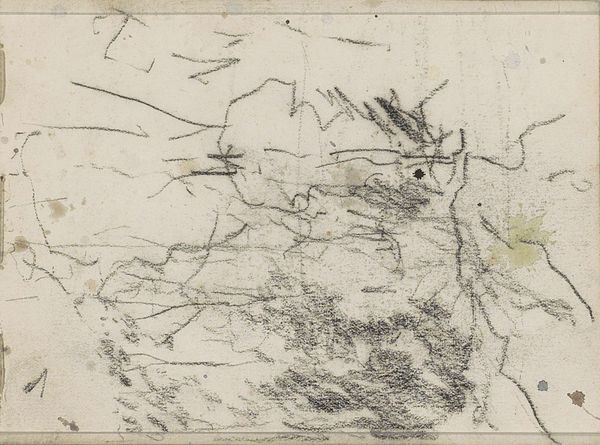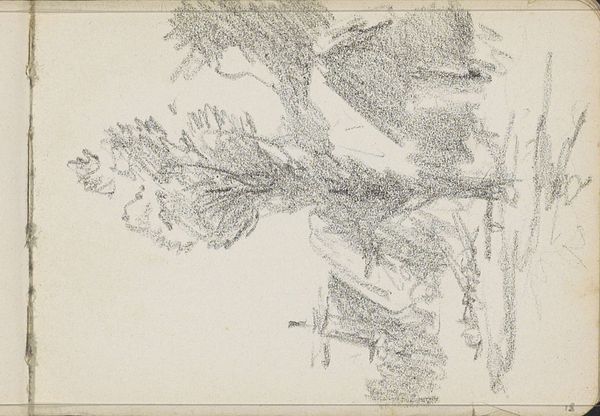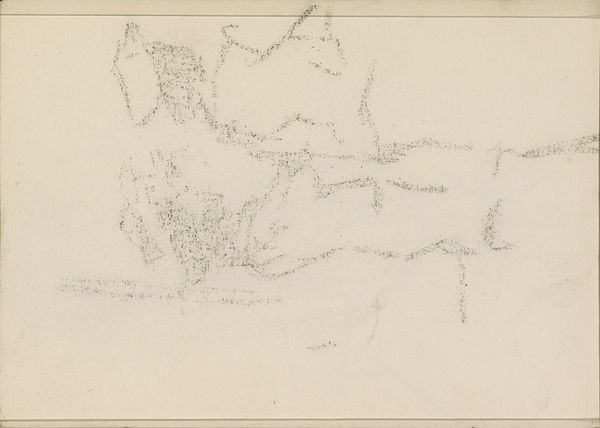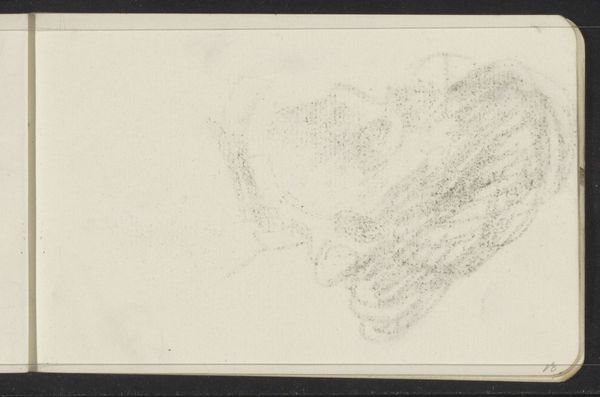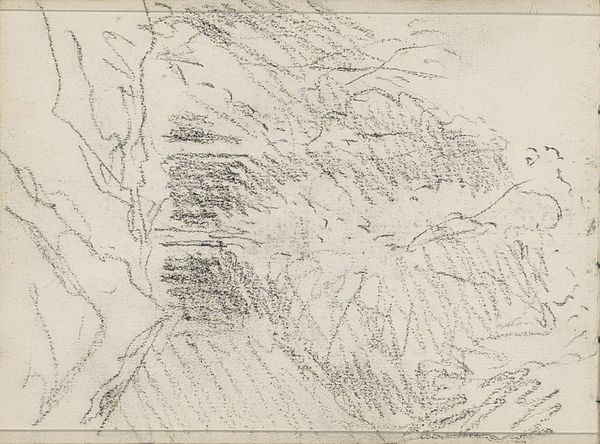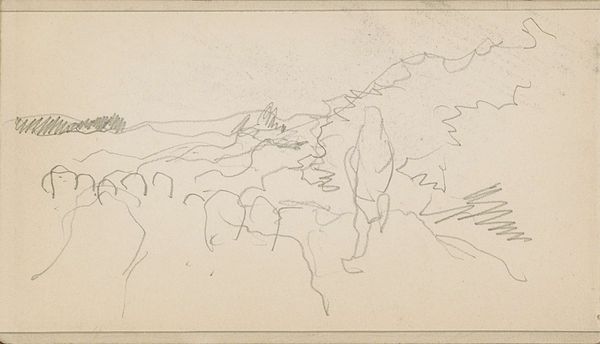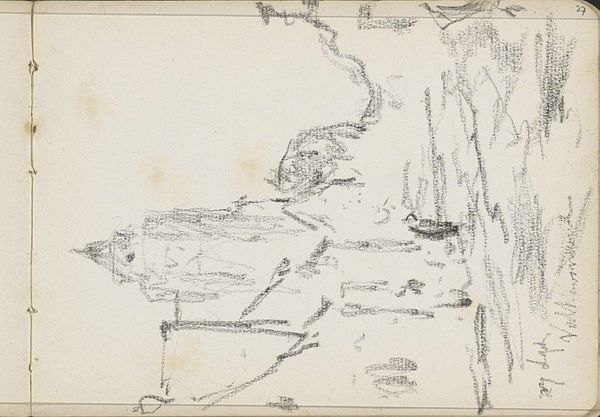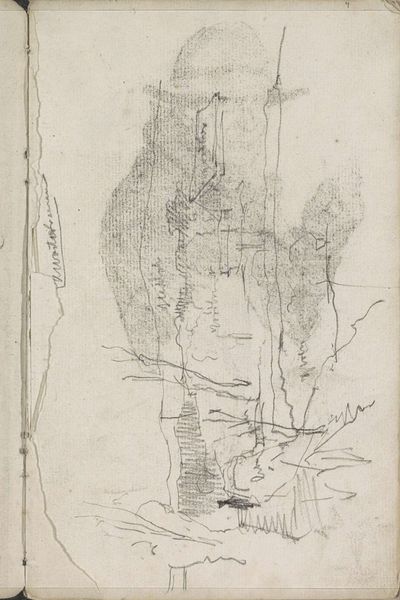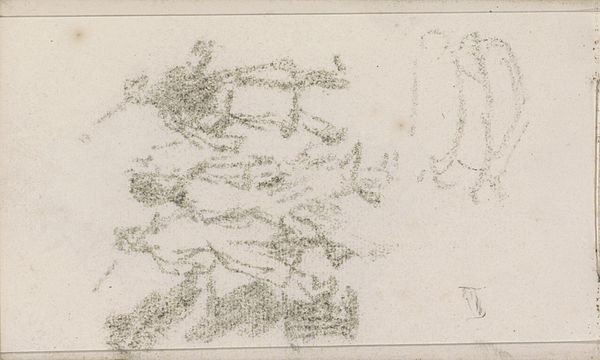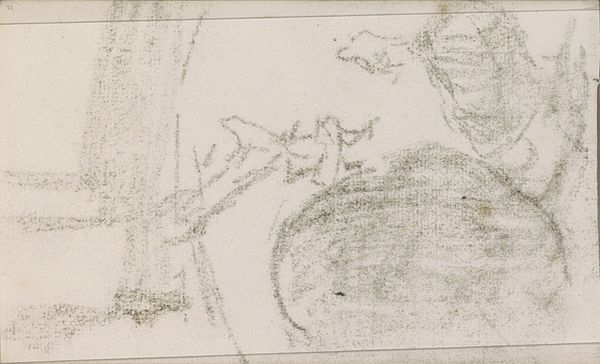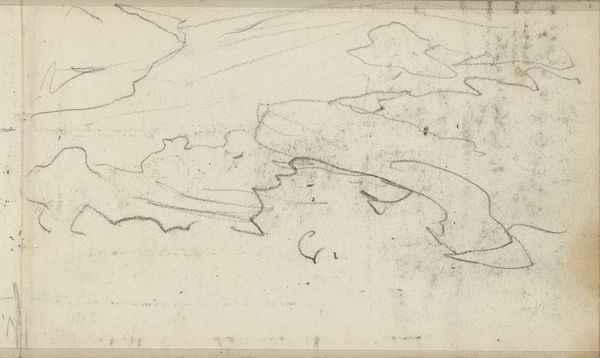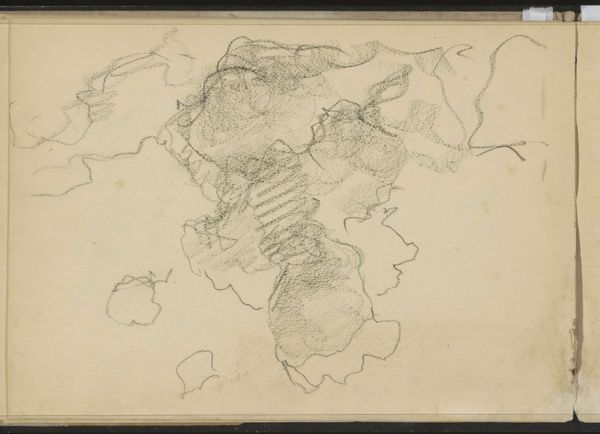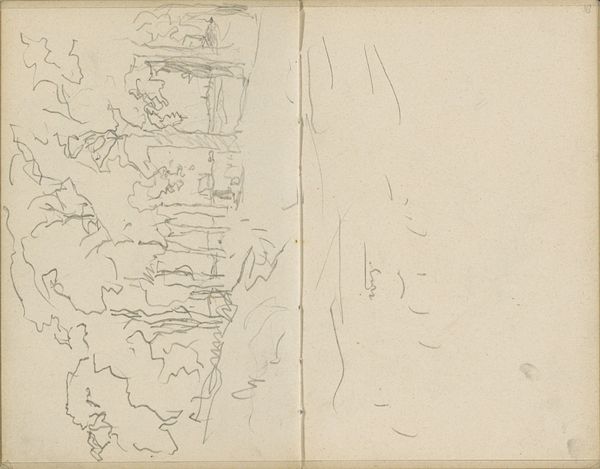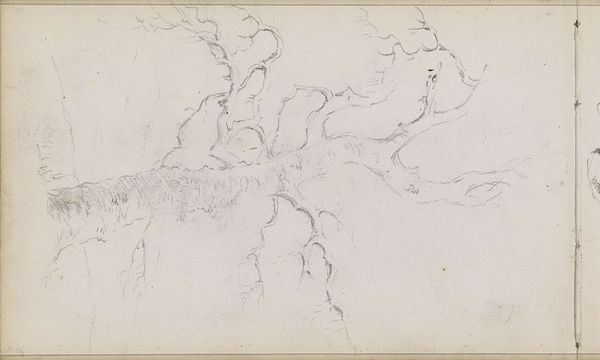
#
light pencil work
#
pen sketch
#
incomplete sketchy
#
personal sketchbook
#
ink drawing experimentation
#
pen-ink sketch
#
pen work
#
sketchbook drawing
#
sketchbook art
#
watercolor
Copyright: Rijks Museum: Open Domain
Curator: Here we have a peek into Willem Cornelis Rip's sketchbook, a work entitled "Pad richting Zevenhuizen," its precise date being uncertain, somewhere between 1866 and 1929. Editor: It's...fragile, almost a whisper on paper. All those light pencil lines give it this ephemeral quality, like a memory fading at the edges. Is that a landscape? Curator: Indeed. We see the rough suggestion of a path, hence the title, probably heading towards the village of Zevenhuizen. It exemplifies the artist's quick notation and impressionistic style, a moment captured en plein air. The social function of this type of landscape drawing gained traction at this time, illustrating rural life that had a wide impact on society through the art market and printed illustrations. Editor: I love how the artist trusts the negative space, letting the whiteness breathe around the shapes. There’s a rawness here, an immediacy. It feels almost… illicit, like catching the artist mid-thought. Curator: It is worth keeping in mind the cultural conditions surrounding sketchbook practice during this period. Sketchbooks became intimate zones of experimentation, pushing beyond the rigidity of the established art world at the time. These sketchbooks were almost never exhibited publicly. Editor: So true. It’s interesting that these highly personal pieces weren't for the audience's consumption, yet we're peering into them today. Did these artists even consider future spectators of their work? What were the motivations behind such diaristic records of places, moments, or subjects? Curator: Certainly, the historical context sheds light on its meaning for us, offering a chance to re-evaluate our own understanding of art. I feel that looking at artwork gives an invaluable sense of cultural practice, as these images were widely reproduced, shared, consumed, and debated within and outside the Netherlands. Editor: Yes, you know, it feels like a reminder that art doesn't always have to shout to be heard. Sometimes, it's the quiet sketches, the incomplete thoughts, that resonate the loudest.
Comments
No comments
Be the first to comment and join the conversation on the ultimate creative platform.
